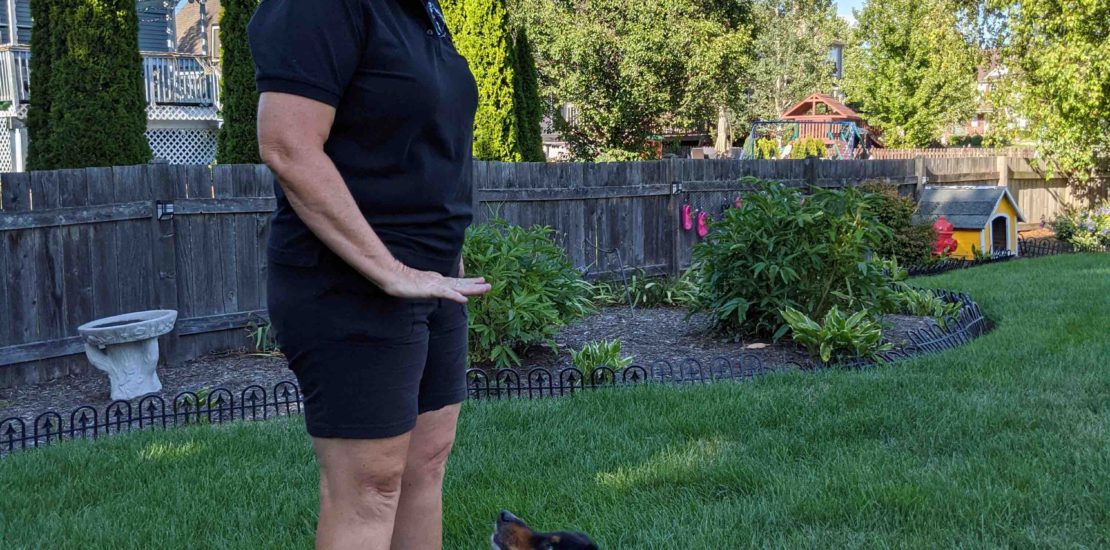- May 21, 2024
- Posted by: optimaadmin
- Category: Training

Which type of training is right for me and my dog?
What comes to mind when you hear the words “dog training”? When does it start? When does it end? Does it ever end? What kind of training will work best for my dog and what can I expect from each method? There’s a book that can be written about this topic, and in fact I’m in the process right now. But let’s hit the high points here by starting with this statement… dog training is never done, no matter which method you choose. Dogs remain like a little child in their development throughout their lives. Much like we must continually remind a 2-year-old child what the right thing to do is, we will remain in a training mindset for the dog’s lifetime because they will always be a 2-year old developmentally.
There are three distinct types of training:
- Group classes
- Private training in your home
- Any training program where you send the dog away to someone else
Before we go any further, some things to keep in mind are:
- Training is never done
- You need to understand the difference between obedience and behavior training/conditioning
- Each type of training will involve you to some degree.
Let’s look at each type of training in more detail now. Group classes are a terrific environment to work on a dog’s response to obedience commands in a distracting environment. Assuming you have done some work already with your dog at home, whether with a trainer or by yourself, you will up your game by being in a distracting environment with other dogs and people around. If you have not done any work training with your dog before getting to class, you and the dog will likely be confused and a bit frustrated because you are now in a very distracting environment. Your dog is going to be trying to manage that distraction in the only way it knows how, which may not be what you are looking for from the dog.
Classes are certainly going to be less expensive than private in-home training, due primarily to the fact that the trainer can meet with several people and their dogs at one time in one location, making it more cost effective. You may find it frustrating, not only from the perspective of your dog acting like a nut if you have not done any training previously, but also because you may want the individual attention of the trainer to answer your individual questions. Out of respect for the other handlers/dogs that’s not what is going to happen in class. Additionally, your dog’s behavior will change, 99.9% of the time, once they have been removed from the environment where the specific behavior was happening.
The best place to work on a dog’s specific behavior (your dog’s response to something environmental – doorbell, nuisance barking, etc) at home or out in public is… wait for it… at home or out in public! This form of private training is meant for someone who is willing to do what is necessary to address these specific behaviors and that is through private in-home training. This method is far more personal and specific as it is tailored to meet you and your dog’s needs. Private training will understandably be more expensive than a class because the trainer will be traveling to your home only to work with you and your dog. You should be able to work on both behavior (your dog’s response to something environmental) and obedience (your dog’s response to a given command). This is a more integrative approach to training.
This private training approach will require you to step up and be willing and prepared to do quite a bit of the work with the trainer’s support and guidance. Working in-home with a trainer enables you to ask all of the questions you have. The time is just for you, not divided up with other handlers. This is a perfect place to begin your training with your dog. Why? Because you are working in a non-threatening environment for both you and your dog. This makes it much easier to learn and practice getting it right. You can add more distractions as you reach plateaus and want to grow.
For example, you could go to a park to work/train. You could go to places like Petsmart or Lowes to work in the aisles and you will have all the distractions you want. As you and your dog become more proficient at handling the distractions, then it is time to consider enrolling in a group class.
The final form of training to understand is any form of training where you send the dog away for a time. Studies have shown that it takes about 66 days (around two months) and five distinctly separate locations for a dog to effectively learn a new skill. With this in mind, if the training program you are considering is anything less than a minimum of two months’ time, forget about it. You are wasting your money.
In addition, if you are taking the dog somewhere for the day and then picking it up in the evening to come back to the friendly confines of home, its original environment, there is time for the training to be undone even overnight!! I see it all the time. The training the dog is getting will be related to the environment it is in while learning. The dog may have learned something new, wherever the training was taking place, but you have learned nothing. In other words, you will have to be trained as well so that you can help the dog make the transition from where it learned the material/commands to your home. This form of training is best suited for someone who does not want to, or is incapable of, doing the work themselves. Be careful however, if this describes you, because when you get the dog back home, and you are still the same person not wanting to do the work, you can count on your dog returning to its old behavior much like a rubber band snapping back into place. The dog only knows the behavior that you have spent a lot of money to learn in the training location. If you don’t follow through with what was taught, you will have nothing to show for your money spent on training.
In the end, I suggest you do your homework and research each method of training for yourself. Don’t simply take your friend’s word for it or what someone says on social media. Look into it yourself. Consider the time and money you have to dedicate to training and determine what works best for you and your dog.

